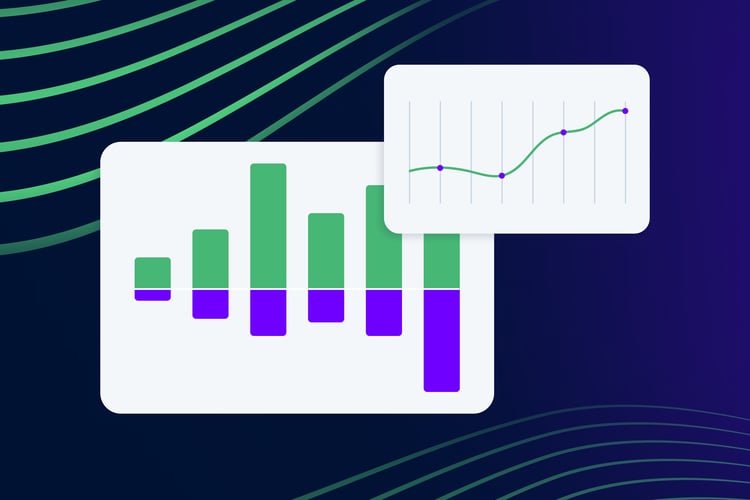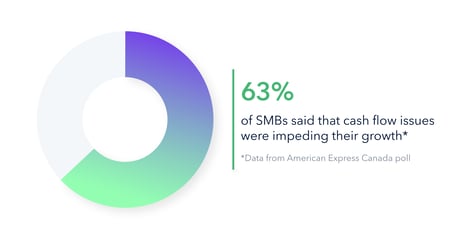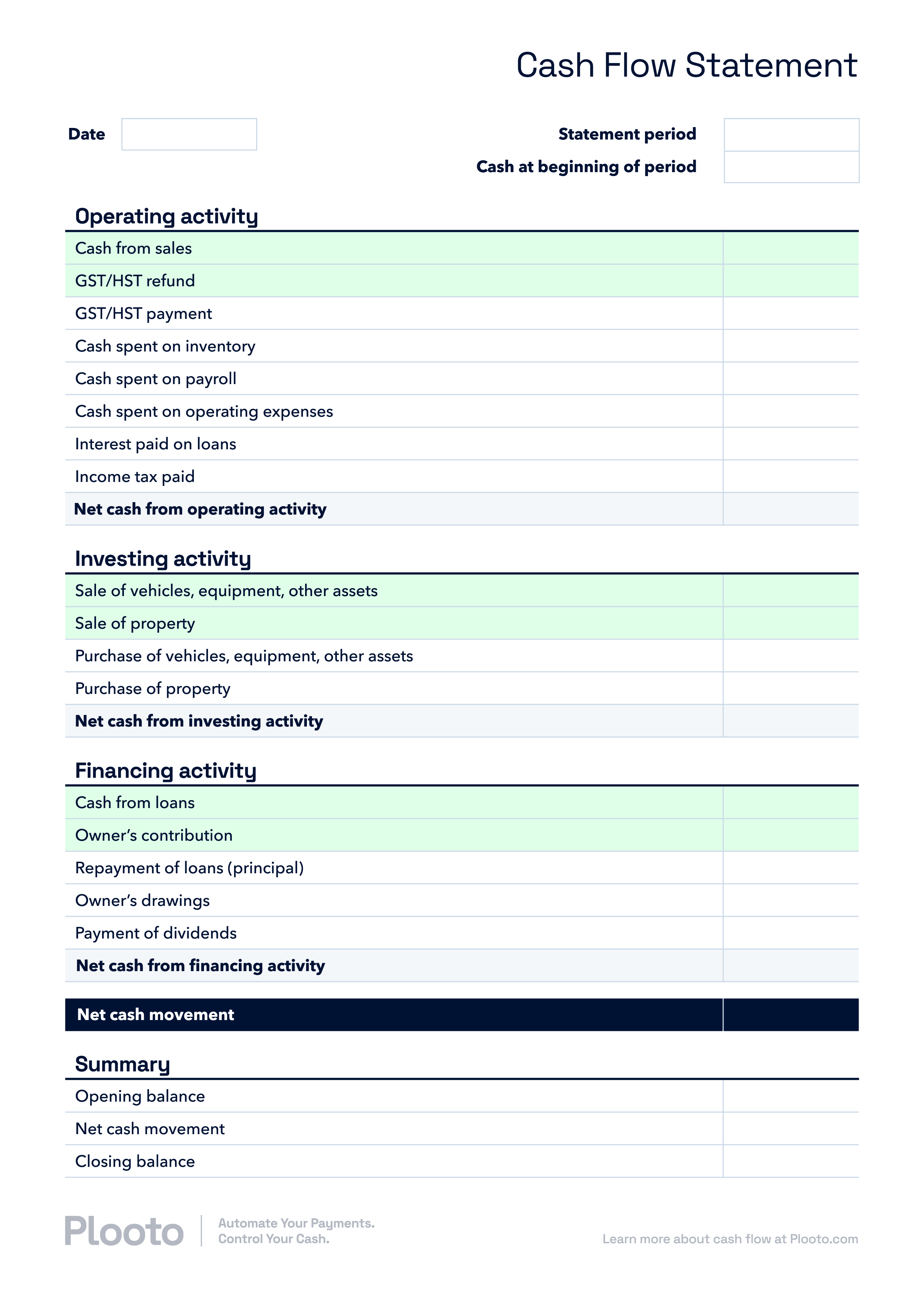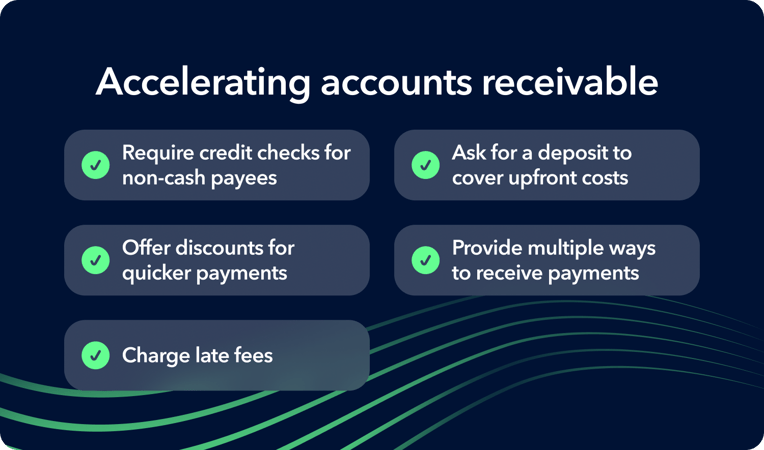
It’s no secret rebounding from the economic challenges of the pandemic has been especially difficult for small to medium-sized businesses (SMBs). According to a recent poll by American Express Canada, 63% of SMBs said that cash flow issues were impeding their growth — and many of the challenges cited came down to problems just nailing the basics of financial management.

Effective cash flow management still evades some small business owners — who are experts in their fields, but not necessarily in finance.
So how do you conquer these issues with your business needs in mind? Here are three keys to understanding your cash flow and making sure it stays on track.
Key 1: Have an effective measurement practice in place
Utilize cash flow statements
By allowing you to track the inflows and outflows of cash for your business, cash flow statements not only give you a snapshot of your business's current financial health but also provide information that helps you make future decisions. With a negative or positive cash flow statement, you can identify which high-performing products you should invest in and which parts of your business have high expenses.
Download our free cash flow statement template
Ready to get started on your new cash flow statement? Download our free template!
Download template
Understand your working capital
By using a cash flow statement, you can understand how much working capital — the amount of capital you have left after expenses — you have available. Just take your total cash inflows and subtract your total cash outflows. What’s left is working capital.
A positive working capital indicates good financial health for your business and indicates that your business is in a good spot to manage unexpected expenses without affecting operations.
Project your cash flow
If you create cash flow statements regularly, you can observe trends and make future cash flow forecasts according to current and past data. These projections can help you make strategic business decisions and ensure that you are accounting for any what-if scenarios.
Key 2: Manage your AR/AP strategically
Managing accounts payable
Staggering your accounts payable across different time periods can help you manage your supplier payments more effectively and can provide you with more flexibility and better payment terms.
For instance, if you have 30 days to make a payment to a vendor, you can time that expense around other, less flexible obligations. You may also be able to negotiate more favorable terms, getting more time to pay bills or receive early payment discounts.
You can also manage payables more effectively by analyzing if you need to lower costs or look for flexible payment terms. If you can lower or cut costs altogether, you can also redirect those resources to high-growth and high-margin parts of the business.
Accelerating accounts receivable
Any business can be subject to cash flow problems if their customers are taking too long to pay them. Fortunately, there are many ways you can accelerate your accounts receivable and provide your customers with payment flexibility:
- Require credit checks for non-cash payees
- Ask for a deposit to cover upfront costs
- Offer discounts for quicker payments
- Provide multiple ways to receive payments, like cash, checks, credit cards, and direct funds transfers
- Charge late fees

Online payment platforms can also make staying on top of invoices easier by helping you track receivables and rapidly move money between accounts.
Key 3: Leverage automation to make cash management more efficient
To effectively manage cash flow and build a foundation for long-term financial success, small businesses must automate parts of their cash flow process. Using a payment automation platform can help streamline your AP process and AR process by reducing payment times and providing you with real-time access to data for incoming and outgoing payments.
As your business grows, you’ll naturally have to navigate more complex workflows. Integrating AR/AP automation technology with your accounting software lets you streamline the entire payment process. This means your business can shorten the time between creating an invoice and receiving payment, while also auto-reconciling sent and received payments with your bookkeeping software.
This can also help your company save time, free employees from repetitive, manual data entry, and improve the accuracy of your cash flow reporting.
Start managing cash flow better today
Positioning your business for the future starts with making sure you’re covering the basics well. Fortunately, technology can help simplify the process, from understanding where your business stands to better managing the money flowing in and out of your business.
With a payable and receivable platform like Plooto, you can simplify manual payment and accounting processes, so you have complete and effortless control over cash management. Automation gives you the visibility you need over your day-to-day finances and enables you to act on growth opportunities with confidence.
Ready to fully master your cash flow management?
Read our full guide to future-proofing your small business cash flow for more tips and recommendations.
Read the guide








